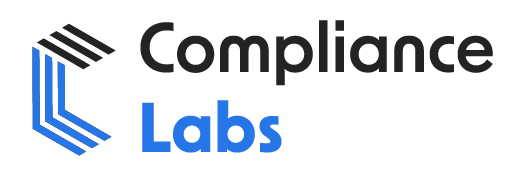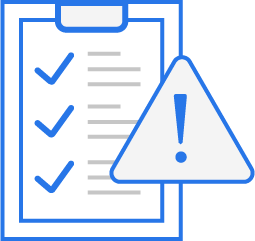In the current economic climate, characterized by rapid changes and digital transformation, supply chains are becoming more complex and intricate than ever before. The world has shifted towards globalization and digitization, morphing the traditional supply chain into a complex web of interconnected vendors, manufacturers, and service providers. Organizations increasingly depend on third-party suppliers to maintain the seamless delivery of goods and services crucial to their operations. However, this dependency introduces significant vulnerabilities that can disrupt business continuity, jeopardize data integrity, and lead to compliance failures. Thus, vendor risk management has emerged as a cornerstone for organizational resilience.
Are you aware that 60% of businesses experience breaches linked to third-party vendors? This staggering statistic underscores the urgency for organizations to prioritize vendor risk management. This article delves into the essential components of vendor risk management, detailing its core aspects, best practices for effective implementation, and the compelling business rationale for investing in these strategic initiatives. By fostering a comprehensive understanding of vendor risks, organizations can navigate complexities more effectively and safeguard their business interests.
Understanding Vendor Risk Management
What is Vendor Risk Management?
Vendor risk management (VRM) is a structured framework aimed at identifying, assessing, monitoring, and mitigating risks associated with third-party relationships. As organizations lean heavily on outsourcing and collaborations, recognizing the potential threats posed by vendors is critical. A compromise in one segment of the supply chain can lead to disastrous outcomes, affecting not only the immediate organizations involved but also their clientele, stakeholders, and the broader market landscape.
To build an effective vendor risk management framework, organizations must evaluate a variety of risk facets, including operational disruptions, cybersecurity threats, compliance vulnerabilities, and financial stability. By addressing these points, businesses can prepare for and effectively respond to potential pitfalls posed by third-party vendors. Furthermore, solid vendor risk management practices can nurture stronger, trustworthy relationships with suppliers, ultimately benefiting all stakeholders involved.
The Rising Threat Landscape
The danger facing supply chains is multifaceted and increasingly severe. Recent data shows an alarming uptick in cyber-attacks and data breaches stemming from vendor networks. A considerable portion of businesses—60%, according to Cybersecurity Ventures—has reported experiencing a breach linked to a third-party vendor. The deeper integration of technology into supply chain management has only heightened the magnitude of these risks.
Threats come in various forms, including ransomware attacks aimed at payment processors and substantial disruptions caused by vendor failures or insolvencies. Many of these cybersecurity incidents can be traced back to inadequate security measures and compliance protocols within the vendor organizations. Could your organization withstand a breach of this magnitude? Given this prevailing threat landscape, it is imperative for companies to prioritize their vendor risk management strategies to safeguard their operations. Neglecting to do so may expose them to significant operational disruptions, sensitive data losses, and dire financial repercussions.
Best Practices for Effective Vendor Risk Management
Establishing a Comprehensive Risk Assessment Framework
To bolster their vendor risk management approaches, organizations must first establish a comprehensive risk assessment framework. This framework should provide a systematic methodology for evaluating vendors against a diverse set of risk metrics. Key processes involved in developing this framework include:
- Identify and Categorize Vendors: It’s essential to compile a thorough inventory of all vendors, categorizing them based on their significance and risk level. This assessment should encapsulate an examination of their roles within the supply chain, the impact they could potentially have on operations, and their compliance histories to prioritize risk assessments for the vendors that pose the highest risks.
- Conduct Due Diligence: Before engaging with vendors, organizations need to carry out extensive background checks and audits, which are vital for establishing the trustworthiness and operational integrity of potential suppliers. This due diligence should encompass financial analysis, cybersecurity capabilities review, and compliance with pertinent regulations.
- Update Regularly: Risk assessments should be treated as ongoing processes, rather than isolated events. As the business environment evolves, risk profiles of vendors may also shift. Therefore, implementing a routine schedule for re-evaluating and updating vendor risk assessment frameworks is crucial.
By adhering to a systematic risk assessment approach, organizations can enhance their abilities to identify and mitigate vendor-related risks, ultimately reinforcing the resilience of their supply chains.
Implementing Continuous Monitoring and Compliance
Vendor risk is inherently dynamic, presenting a continually evolving challenge for organizations. To keep pace, companies should establish ongoing monitoring mechanisms for vendor security practices and compliance. Here are several strategies organizations can adopt:
- Utilize Advanced Technology: Leveraging automated tools can monitor vendor performance and adherence to industry standards such as ISO 27001 or NIST guidelines. What if you could receive real-time alerts on vendor compliance issues? Applying advanced analytics and AI-driven platforms can optimize efficiency and offer real-time insights into vendor risk levels, enabling organizations to respond rapidly to potential threats.
- Establish Alerts and Notifications: Implement systems that instantly notify stakeholders of any compliance breaches or significant shifts in vendor performance. Such alerts allow timely interventions to address minor issues before they escalate into major threats.
- Create Performance Metrics: Organizations should develop key performance indicators (KPIs) for measuring vendor effectiveness, compliance, and risk levels. Regularly reviewing these metrics can help in identifying trends indicative of escalating risks.
By adopting continuous monitoring and compliance strategies, organizations can proactively manage vendor risks while reinforcing trust and accountability within their external relationships.
Integrating Zero Trust Principles
Adopting the Zero Trust security framework is integral to strengthening vendor risk management. This model operates on the premise that no entity—external or internal—is inherently trustworthy and mandates proactive security measures, including:
- Segment Access Controls: Limiting vendor access to only the vital systems and data is essential. By imposing strict access controls, organizations can reduce their vulnerability and contain potential breaches.
- Authenticate Access Regularly: Ongoing authentication and authorization checks are important. Establish protocols ensuring that vendors comply with security measures while accessing only the information pertinent to their roles.
- Promote User Training: Training stakeholders—including employees and vendors—on security best practices is key. By focusing on identifying phishing attempts and adhering to cybersecurity standards, the overall security posture of the organization can be bolstered.
By weaving these practices into vendor management protocols, organizations can reinforce their security standing and effectively mitigate the risks associated with vendor engagement.
The Business Case for Investing in Vendor Risk Management
Strengthening Resilience and Competitive Advantage
Investing in vendor risk management significantly enhances operational resilience. Organizations that prioritize VRM can withstand and recover from unexpected disruptions more adeptly than their less-prepared competitors. Imagine not only surviving but thriving amid challenges. Moreover, businesses that foster stringent vendor relationships can leverage these alliances to bolster their reputation and market position.
For instance, organizations prioritizing risk management demonstrate resilience through adept vendor management are more attractive to clients. Leaders in the market, such as Microsoft and Dell, have recognized and capitalized on robust vendor management practices as competitive strategies that showcase how effective risk management can ultimately enhance brand loyalty and secure a competitive advantage.
Cost Savings Through Risk Mitigation
Failing to manage vendor-related risks can result in alarming financial consequences. Evidence suggests that organizations neglecting to mitigate such risks incur substantial expenses linked to breaches, including legal liabilities, regulatory fines, and revenue losses resulting from operational downtime. Is your budget prepared for the unexpected? Conversely, investing in effective vendor risk management frameworks can lead to significant savings through improved risk mitigation.
According to an Accenture report, proactive vendor risk management can help organizations save as much as 30% on costs associated with mitigating risks. This robust framework not only boosts security but also contributes positively to the bottom line by averting losses from potential breaches and compliance failures.
Enhancing Reputation and Customer Trust
Beyond financial gains, effective vendor risk management nurtures organizational reputation and strengthens customer trust. Transparent dialogues and accountability in vendor relations reflect an organization’s commitment to protecting sensitive information and upholding ethical standards. In a landscape where customers prioritize data security and ethical responsibility, organizations showcasing their VRM efforts can cultivate stronger relationships.
To cement these facets, organizations should communicate their vendor risk management protocols clearly, outlining compliance measures and ongoing risk mitigation efforts. This level of transparency helps foster trust and assures customers of operational integrity, ultimately enhancing customer loyalty.
Conclusion
In summation, the imperative for robust vendor risk management has never been more apparent. As supply chains encounter unprecedented complexities and threats, it is crucial for organizations to prioritize the development of strong vendor risk management frameworks. Recognizing VRM as a strategic necessity—from crafting effective risk assessment systems to ensuring ongoing monitoring—fortifies businesses against operational disruptions while strengthening their market position.
Organizations should also regard vendor risk management not merely as a compliance obligation but as a crucial path toward sustainable growth in an increasingly volatile landscape. By embracing such perspectives, businesses will enhance operational efficiency, build stronger stakeholder relationships, and ultimately pave the way for long-term success in this tumultuous business environment. The stability and reliability of supply chains are contingent upon our proactive and effective management of vendor risks. Are you ready to take action?




